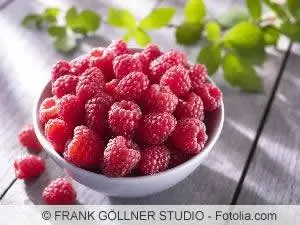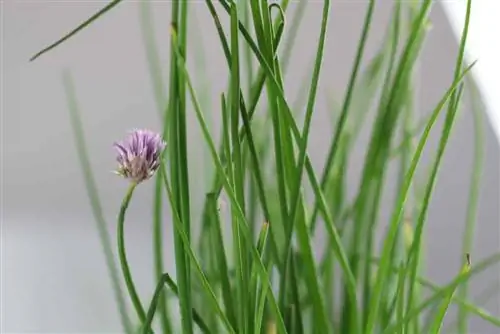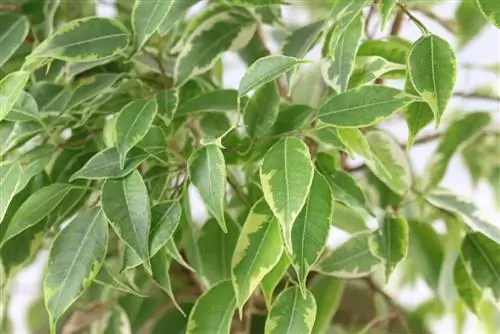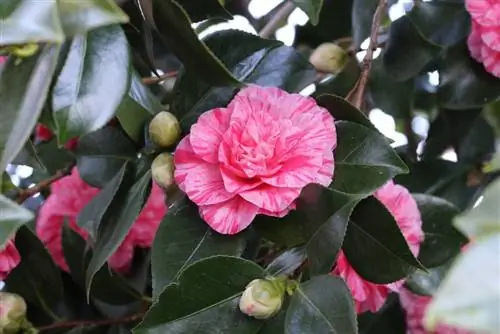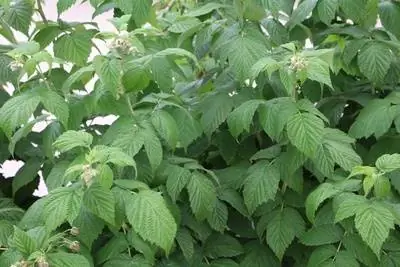- Author admin [email protected].
- Public 2023-12-17 03:39.
- Last modified 2025-01-24 12:45.
In order to trim raspberries correctly, you first have to know whether they are summer or autumn raspberries, because all pruning measures depend on that. While summer raspberries only bear fruit in summer, autumn raspberries can be harvested from the end of summer until the first frost. Both also differ in that summer varieties only fruit on two-year-old wood and only these can be cut off after the harvest. Autumn raspberries, on the other hand, produce fruit on annual wood, so they can be cut back completely in autumn immediately after harvest.
Cutting summer raspberries
As already mentioned, summer varieties produce on two-year-old wood, around June/July. Immediately after the harvest, those canes that have borne fruit are cut off close to the ground and carefully pulled out of the trellis if they are attached to a trellis. Leave around 8-12 of this year's green and vital young rods per meter. These can be recognized, among other things: also on new leaf buds, while biennial shoots have dark brown stems that usually appear dry and wilted. If too many canes are left standing, this can promote the spread of fungal diseases because there is no sufficient ventilation between the individual shoots. If necessary, shorten the remaining rods to approx. two meters and attach them to the scaffolding.
Tip:
Attachment to a suitable structure, e.g. B. a so-called V-frame, has the advantage that it is easier to distinguish and separate the one- and two-year-old rods.
Re-prune in March if necessary
Occasionally, raspberries need to be cut again in March of the following year. The stubs of shortened canes from the previous year protruding from the ground should be cut away directly above the ground. Sick and weak young shoots that no longer produce fruit should also be removed in early spring. This allows the plant to invest more energy in the main shoots, making them stronger and growing faster. If diseased shoots are not removed, they can transmit possible diseases to other shoots.
Planting pruning for summer raspberries
A so-called planting cut is recommended for summer raspberries. With this cut, a rod is shortened to 20 or 30 cm. If there is a second or third rod, these are cut off close to the ground. This cut serves to remove the base eyes, which are now still underground, for sprouting orto stimulate growth.
Cutting autumn raspberries
Autumn raspberry varieties are those that bear fruit on both annual wood and new canes and grow less tall than summer raspberries. They are called remontant raspberry varieties. Flowers begin to form from mid/end of June and the berries can be harvested from August and sometimes into October. Just like summer raspberries, autumn varieties are also blended after harvest, for example in November or late winter. The best time for pruning is between the end of February and the beginning of March. All shoots or canes are cut off just above the ground. However, there will be no second harvest in spring. The new shoots later develop from the base. After cutting autumn-bearing berry bushes, experts recommend leaving around two cut canes per linear meter on the bed. This has the advantage that useful insects such as:B. Predatory mites or the red spider can settle, which then keep pests away from the plants or young shoots in spring. Sick rods should not be used for this purpose and must be disposed of.
Cut for a second harvest
- If a second harvest is desired in spring, it must be blended differently.
- After the first frosts, you do not cut the canes close to the ground like with a conventional cut.
- You only cut the upper part of the canes that were filled with fruit.
- The lower cane and shoot parts are then left standing for a second harvest in early summer.
- This harvest is usually much smaller and shorter.
- It makes more sense to shorten 1-2 canes per plant and remove all others completely.
- The remaining shortened canes then produce some fruit in early summer.
- Once these canes have been harvested, these canes should also be cut off immediately close to the ground.
- However, canes left standing for a second harvest often represent a source of disease infection.
Tip:
Due to the fact that the raspberry plants are significantly weakened by a second harvest and are less productive, it makes sense to grow autumn and summer varieties and plant them at appropriate distances from each other so as not to mix them up later.
Regular cutting protects against diseases
Pruning immediately after harvest for both summer and autumn varieties not only ensures productive subsequent harvests, but can also counteract pest infestation. Since raspberries are generally prone to all sorts of diseases, regular pruning should ensure that not too many canes are left standing.these are not too close. Otherwise, this makes the raspberries particularly susceptible to the dreaded cane disease or root rot. Root rot often occurs in compacted soils and the resulting waterlogging. Canes that are obviously infected should be cut off immediately and disposed of or burned. To minimize susceptibility to root diseases, it can be helpful to plant the raspberries in a hilled bed. Due to the late fruit ripening, autumn raspberries have the advantage that they are less susceptible to the dreaded raspberry beetle, whose maggots are often found in the fruits of summer raspberries.
Tip:
Raspberries are sensitive to competition for food. It is therefore advisable not to place them in close proximity to other plants. Weeds also represent competition and should be removed regularly.

Be careful with offshoots of autumn raspberries
It is completely normal for hobby gardeners to exchange plants, including cuttings from berry bushes. Even if this neighborly help is usually a good gesture, it is better to avoid it, especially with raspberries, because these offshoots are very often infected with fungi and infected with viruses. That's why it's always better to get young and, above all, he althy young plants from a gardening store or a tree nursery.
The right framework for raspberries
A corresponding framework is particularly recommended for summer raspberries. These raspberry canes can grow between 200 and 220 cm high and are extremely flexible, allowing them to hang down to the ground under the weight of the fruit. The canes of autumn raspberries, on the other hand, do not grow as tall and do not necessarily require a scaffold. The individual canes of summer raspberries can be shaped using appropriate scaffolding or a trellis so that enough light can always reach the fruits and the air can circulate well between them. In addition, a frame allows one- and two-year-old canes to be separated, making annual cutting easier.
Speciality Two-Timer Raspberry
The so-called two-timer raspberry is a robust, well-branched and strong new breed with large, firm and sweet fruits that can be harvested twice. The two-year-old canes are harvested from the end of May/beginning of June and the new canes in the summer. Another advantage of this variety is its columnar growth, which makes it suitable for planting in a container. With the two-timer raspberry, you only cut off the two-year-old canes and this is best done in spring. In order to prevent too many canes from forming, excess shoots should be removed regularly in addition to normal pruning. By the way, a so-called knot grid is very suitable for this type of raspberry.
Conclusion
Raspberries are one of the most popular berries in the home garden. Which variety you ultimately choose depends on your personal taste and, if necessary, your care needs. However, this is limited, although regular cutting is the most important care measure, as this is the only way a regular and abundant harvest is possible. When and how to prune depends on whether the varieties are summer or autumn. Otherwise, it always makes sense to grow both types of raspberries, both summer and autumn. This means you can harvest from early summer to autumn without weakening the autumn varieties with a second harvest.

